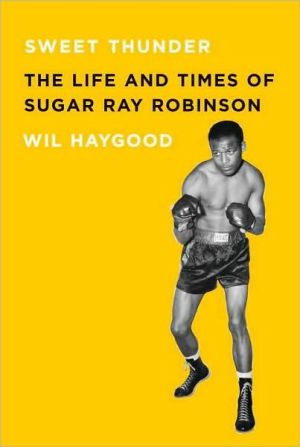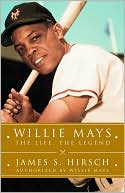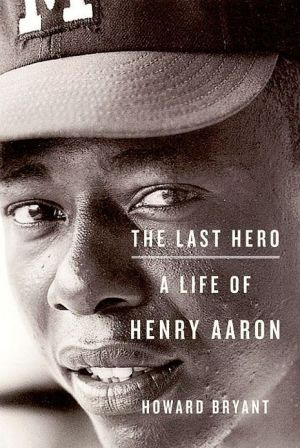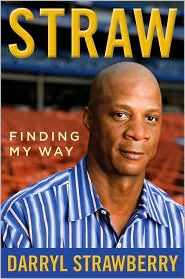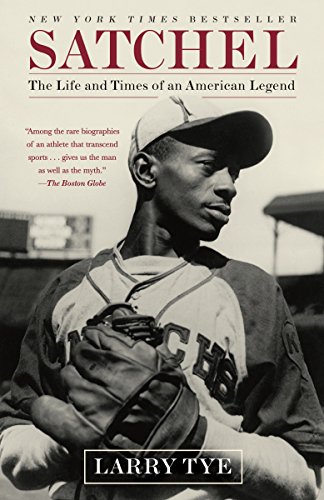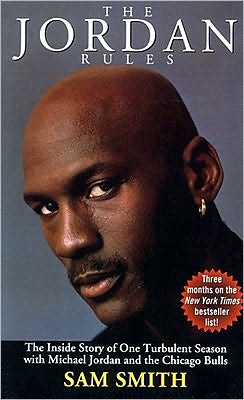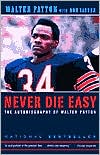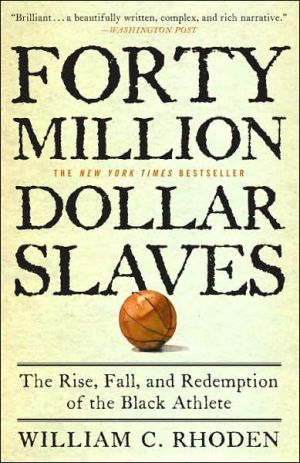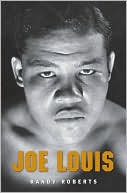Sweet Thunder: The Life and Times of Sugar Ray Robinson
Sugar Ray Robinson was not only one of the most iconic figures of the fight game; almost all sportswriters agree that he was the greatest boxer of all time. This illuminating biography grounds the spectacular story of Robinson’s rise to greatness within the context of the fighter’s life and times. Born Walker Smith Jr. in 1921, Robinson’s early childhood was marked by the seething racial tensions and explosive race riots that infected the Midwest throughout the twenties and thirties. After...
Search in google:
From the author of the critically acclaimed In Black and White: The Life of Sammy Davis, Jr., comes another illuminating socio-historical narrative of the twentieth century, this one spun around one of the most iconic figures of the fight game, Sugar Ray Robinson.Continuing to set himself apart as one of our canniest cultural historians, Wil Haygood grounds the spectacular story of Robinson's rise to greatness within the context of the fighter's life and times. Born Walker Smith, Jr., in 1921, Robinson had an early childhood marked by the seething racial tensions and explosive race riots that infected the Midwest throughout the twenties and thirties. After his mother moved him and his sisters to the relative safety of Harlem, he came of age in the vibrant post-Renaissance years. It was there that—encouraged to box by his mother, who wanted him off the streets—he soon became a rising star, cutting an electrifying, glamorous figure, riding around town in his famous pink Cadillac. Beyond the celebrity, though, Robinson would emerge as a powerful, often controversial black symbol in a rapidly changing America. Haygood also weaves in the stories of Langston Hughes, Lena Horne, and Miles Davis, whose lives not only intersected with Robinson's but also contribute richly to the scope and soul of the book.From Robinson's gruesome six-bout war with Jake "Raging Bull" LaMotta and his lethal meeting with Jimmy Doyle to his Harlem nightclub years and thwarted show-biz dreams, Haygood brings the champion's story, in the ring and out, powerfully to life against a vividly painted backdrop of the world he captivated.The New York Times - Dwight Garner[Haygood's] excellent new biography of Robinson…captures his grace and power, at many disparate moments, as well as it's been captured…You come away from Sweet Thunder,…with images of Robinson in his prime striding through your head. Mr. Haygood…is a biographer in his own prime. Sweet Thunder has patches of slack writing, but like its subject, it has real style and power.
WHILE LEADING TROOPS into battle in 1775—and with time to assess his setbacks while shifting and plotting new strategies during the American Revolution— George Washington came to a conclusion about sartorial affairs and his colonial militias: His soldiers were badly dressed. In the field, their clothing consisted of common apparel: shirts and pants and shoes they managed to grab from cabin or tent. Spotting them from yards away, one was hard pressed to distinguish a private from an officer. The slipshod dress— soldiers had no uniforms at the Battle of Bunker Hill— often created confusion in the ranks. Soon enough Gen. Washington insisted on uniforms for all his men. The standards of military dress would be elevated even more in succeeding American engagements.\ It was World War II that marked the first time military dress was lent the sheen of celebrity. From Broadway to Hollywood, men and women from the entertainment ranks would be featured in newsreels and on magazine covers wearing their military attire. Life and Photoplay magazines were particularly adept at placing uniformed stars on their covers and throughout their pages. Jimmy Stewart and Clark Gable looked as genuine in uniform on a military base as they had on celluloid.\ Nothing created more of a high- wire act for American officialdom, however, than the combination of blacks and war. It was a segregated country, and Secretary of War Henry L. Stimson remained opposed to integration of the armed forces. But Washington officials were aware of the sporadic outbursts of Negro activism around the country in recent years, protesting the failure of antilynching and antidiscrimination legislation. Some notable figures from the black community— Paul Robeson, W. E. B. DuBois— had uttered rather romantic sentiments about the Communist Party, a circumstance that made Washington twitchy, the more so after the blood began to spill upon the sand following the bombing of Pearl Harbor on December 7, 1941.\ Might blacks sour on patriotism? Might America be unable to showcase a unified front across racial lines? Labor leader John L. Lewis, in a nationwide radio address delivered before the attack on Pearl Harbor, minced no words about what he saw as the state of war and jobs and equal rights. “Labor in America wants no war nor any part of war. Labor in America wants the right to work and live— not the privilege of dying by gunshot or poison gas to sustain the mental errors of current statesmen.”\ Could a populace— black men and women— be gathered up and set down on military bases and all the while be expected to heed the same imprisoning rules that applied in outside society?\ There were no Negro Hollywood stars for the War Department to woo. No figure from the Negro community in Tinseltown whose weekly movements were followed and marveled at by the larger public, giving them the aura of celebrity and creating a public relations boon.\ Having no one from Hollywood to turn to, the War Department reached into the Negro world of sports. And that meant Joe Louis and Sugar Ray Robinson.\ Robinson was clearly rising in boxing circles, and quite rapidly. In 1941, in an Associated Press sports editors’ poll ranking athletes,\ Robinson received 29 points to Joe Louis’s 14. That positioned Robinson in sixth place to Louis’s tenth. Frank Sinkwich, the University of Georgia’s galloping halfback, was named the nation’s number-one male athlete that year; Boston Red Sox slugger Ted Williams was right behind Sinkwich. (Before he had officially entered the military, Robinson participated in a celebrity boxing event at Camp Upton, on Long Island, with the main draw being an exhibition bout between Joe Louis and his sparring mate George Nicholson. It was a mixture of boxing and entertainment watched by a crowd of seven thousand, and both Sugar Ray Robinson and Bill “Bojangles” Robinson were there and whispered about.)\ On the streets of Harlem, Sugar Ray Robinson was beginning to carry a special cachet. The reporters had begun referring to him as “the Harlem Dandy.” Whereas Joe Louis struck many as severe, Robinson was as light and chipper as a dancer. In addition, Robinson lived in Harlem; Louis was a visitor to that cultural stomping ground, waltzing about after his big bouts and on social occasions. The height of Joe’s power had been in the mid- and late thirties.\ “If you’d see both of them on the street,” recalls the influential congressman Charlie Rangel, who was raised in Harlem and would see Louis and Robinson side by side and gawk at them as a kid, “you’d want to run over to Sugar Ray. If both of them were walking into a bar, you’d get a wave from Joe. But Sugar Ray would stop and be rapping. Joe was very self- conscious. If there was an opposite of that, it was Sugar Ray.”\ But poll standings aside, Sugar Ray wasn’t about to overtake Joe Louis’s popularity in the early months of wartime as the government waged a battle for the hearts and minds of black folk. Joe was legend; Joe was lore; Joe was going to have a poem (“Joe Louis Named the War”) written about him and the war.\ Joe Louis had given black America an emancipation right into the sports world when he became heavyweight champion in June 1937 by knocking out Jim Braddock at Comiskey Park in Chicago.\ Braddock, a Depression- era hero— the Cinderella Man— had overcome poverty to stage a ring comeback in the early 1930s; his defeat of champion Max Baer on June 13, 1935, was considered a seismic upset. The victory set up his bout with Louis. Louis was a native of rural Alabama, and on the day of the Braddock match, some of his relatives living in the Bukalew Mountains near Lafayette, Alabama, got themselves into town so they could press ears to the radio. Louis had trained in near-isolation in Wisconsin for the Braddock title match. There was so very much at stake, and there were also worries from many quarters about the measure of Louis’s gifts: He had been knocked out in June 1936 by the German Max Schmeling at Yankee Stadium. As that bout deepened, and Schmeling— who looked on his way to defeat— began staging something of a comeback, whites, soaked with emotion now, began to root for the German, a noise that caused those in Louis’s corner to wonder about national loyalty. (An ocean away, Adolf Hitler, chancellor of the Third Reich, was goose- stepping his Nazi armies around Europe, killing and plotting war.) It was in the eighth round of that 1937 Chicago bout when, with the world listening, Louis’s fierce right caught Braddock. “I laid it solid,” Louis would recall, “with all my body, on the right side of his face, and his face split open. He fell in a face-down dive.” Louis had become the first black champion since Jack Johnson. Johnson was so mercurial, there were even those in the Louis camp who considered the retired champ unpredictable and belligerent. Johnson was still displaying a lavish appetite for white women, agitating many blacks as he complained that black women had taken advantage of his financial largesse. Joe Louis left no doubt about his cultural pride. Upon his victory over Braddock there were celebrations in mud-strewn Negro hamlets, in gin joints, in houses of ill repute in Detroit, in dressing rooms of Negro League ballplayers barnstorming through the South, in hair salons, on rooftops where garden parties were held in Harlem, beneath the hanging lights of the fine homes that Negroes had purchased in the Georgetown section of the nation’s capital. Joe had made sure that— as William Nunn, the sports editor of The Pittsburgh Courier put it—“all the fondest dreams of the 12,000,000 racial brethren of the new champion have come true. He has been a credit to them and now he rides the ‘Glory Road.’ He has taken them up with him. He is theirs.” The aura of Joe Louis spread like honey. A Harlem columnist felt obliged to remind his readers: “For the benefit of some Harlem lovelies, Joe Louis is due in Harlem next week.”\ When Louis felled Schmeling in June 1938 in their ballyhooed rematch— against the smoke of war in Europe and the attendant rise of Naziism— he had produced the final line needed in a narrative arc that could be felt from Sugar Ray’s Harlem to the offices of the War Department: The nation needed to be unified on the home front.\ In 1942 Louis’s musings about patriotism had an undeniable psychological weight for the American Negro. The military printed up Army posters showing Louis in uniform— helmet, khakis, canteen on belt loop, his face grim and a bayonet in hands— with some words he had uttered at a rally enlarged beneath the photo: “We’re going to do our part . . . and we’ll win because we’re on God’s side.” Suddenly, he was the Negro basso profundo that sounded through the political worries of the nation. Sugar Ray Robinson— inducted into the Army in February 1943, thirteen months after Louis—was the keening alto sax in the corner. He looked strikingly handsome in his pressed Ike jacket, his creased slacks, and his corporal’s stripes. (Official military records would list him as Corp. Walker Smith, his birth name.)\ It would, however, be the last time that Robinson would seem to shrink in the presence and aura of a fellow prizefighter. He had yet to gain his first belt title; his welterweight size made him look thin as a fashion model. Even though he had had some tough battles in the ring already, he still retained a boyish look. But he was certainly positioning himself as the one figure— with his athletic prowess and rhythmic style— who was ready to burst right through the curtains of racial witchery that both Jack Johnson and Joe Louis had had to part.\ It seemed that entertainers and movie stars were everywhere in the military seasons of 1943 and 1944. If they were not in uniform, they were performing on military bases. Actresses such as Hedy Lamarr, Bette Davis, Gene Tierney, and Carole Lombard were involved in the effort, their beauty and verve helping to sell war bonds and bring smiles to the troops. Jimmy Stewart— who had been a huge hit in Frank Capra’s Mr. Smith Goes to Washington in 1939—joined up and became a bomber pilot. The matinee idol Tyrone Power would end up in the South Pacific. Fellow actor Ronald Reagan reported to Fort March in San Francisco. (Hollywood hummed into action with its patriotic- themed films. This Is the Army starred Kate Smith, Irving Berlin, and, among others, Lt. Ronald Reagan and Sgt. Joe Louis. The film was full of skits and songs; Joe’s role was a speech-making cameo. He appeared in a swaying all-black musical number, in which some lovely black dancers cavort about, pointing out the cut of military uniforms and crooning— about the uniforms specifically—“ That’s What the Well-Dressed Man in Harlem Will Wear.” The film was directed by Michael Curtiz.) Not long after, Carole Lombard’s plane, a TWA DC- 3, went down in the Nevada mountains, killing her and the crew— she had been out selling war bonds, blowing kisses— her husband, a heartsick Clark Gable, joined the military. Gable and Lombard had nicknames for each other: Ma and Pa.\ “Why Ma?” Gable asked, over and over, until it began to sound like an echo.\ The American GIs needed laughter, so the comics packed their bags too. Jack Benny cracked wise, though he thought it smart to leave his black sidekick, Eddie “Rochester” Anderson, behind, given the racial setup of military life. The champion of the comics, however, was a jovial- looking jokester who had been born in England but raised in Cleveland. Bob Hope— who had boxed as a teenager before abruptly leaving that sport behind— took to war shows like a starlet to Sunset Boulevard. Hope had made a name for himself in vaudeville. Then came Broadway and comedy shorts. Hollywood summoned him and he garnered attention in The Cat and the Canary in 1939. But his early “road” pictures with crooner Bing Crosby—Road to Singapore in 1940 and Road to Morocco in 1942—set new standards for that kind of hilarity. The war shows seemed to have been dreamed up for a man such as Hope: Some days he did four performances, yuk- yuking it with the troops, tossing out silly lines about his cowardice, about his Hollywood friends. At a performance in Tunisia, a wiseacre in uniform popped off at Hope.\ “Draft dodger! Why aren’t you in uniform,” came the voice, stunning Hope.\ “Don’t you know there’s a war on?” Hope answered, his vaudeville timing smooth as ever. “A guy could get hurt!”\ Sugar Ray Robinson and Joe Louis—paired up in the military—were not on the road to Morocco. They were, however, soon on the road to Alabama.
\ Gerald EarlyHaygood's book is certainly one of the best biographies of a boxer ever written…an important contribution to both sports literature and African American studies.\ —The Washington Post\ \ \ \ \ Pete Hamill…an ambitious portrait of an American legend…Wil Haygood has written more than a simple chronicle of a sports career. He wants to place Robinson as a central figure in the rise of urban African-Americans in the 20th century…Haygood has given us a lot to ponder in this multilayered biography, about a complex man who epitomized so much of his era. For those who don't know the story, it will have plenty to teach, about style, grace, intelligence and heart.\ —The New York Times Book Review\ \ \ Dwight Garner[Haygood's] excellent new biography of Robinson…captures his grace and power, at many disparate moments, as well as it's been captured…You come away from Sweet Thunder,…with images of Robinson in his prime striding through your head. Mr. Haygood…is a biographer in his own prime. Sweet Thunder has patches of slack writing, but like its subject, it has real style and power.\ —The New York Times\ \ \ \ \ Kirkus ReviewsThe captivating life of the African-American champion who brought grace and style to the boxing ring in the 1940s and '50s. Born Walker Smith Jr. in rural Georgia, Sugar Ray Robinson (1921-89) grew up poor in Detroit and Harlem, where he fought his first amateur fights out of a church boxing club and won the New York Daily News' Golden Gloves tournament in 1939. With his lightning speed and matador moves, the handsome welterweight created a sensation, earning the monikers "Death Ray" and "Sugar Ray," which stuck. In this insightful, highly readable biography, Washington Post staff writer Haygood (In Black and White: The Life of Sammy Davis, Jr., 2003, etc.) chronicles the intriguing life of this gifted boxer and dandy, who toured Jim Crow America in World War II with fellow serviceman, and heavyweight champ, Joe Louis; had a long-running feud with fighter Jake LaMotta; and pursued the savage sport that held "a kind of sacredness" for him until 1965, when he retired with 173 wins, 19 losses and six draws. No one ever knocked him out, notes Haywood. All the while, the jazz-loving Robinson ran a popular Harlem nightspot, zipped around Manhattan in a flamingo-colored Cadillac convertible with his midget chauffer, Chico, and hung with leading African-American artists and entertainers. Haygood weaves in stories of the boxer's ties with Lena Horne, Langston Hughes, Miles Davis and others who emerged in the postwar years in the singular "convergence of men, music, and style" that was celebrated by Arnold Gingrich in Esquire. Surprisingly, there has never been a Sugar Ray biopic, but Haygood's narrative is chockfull of movie-ready scenes: Robinson challenging military-base segregation; knockingout Killer Jimmy Doyle, who died 17 hours later; touring with Count Basie in an ill-advised nightclub act; being received like a movie star in Europe. Always enigmatic, Robinson was an absent father, had a volatile marriage, went mysteriously AWOL in World War II and wound up near-broke. Sportswriter Red Smith called him "a brooding genius, a darkly dedicated soul who walks in a lonely majesty, a prophet without honor, an artist whom nobody, but nobody, understands."A wonderful book that deserves a wide audience. Author tour to Atlanta, Detroit, New York, Washington, D.C. Agent: Esther Newberg/ICM\ \
